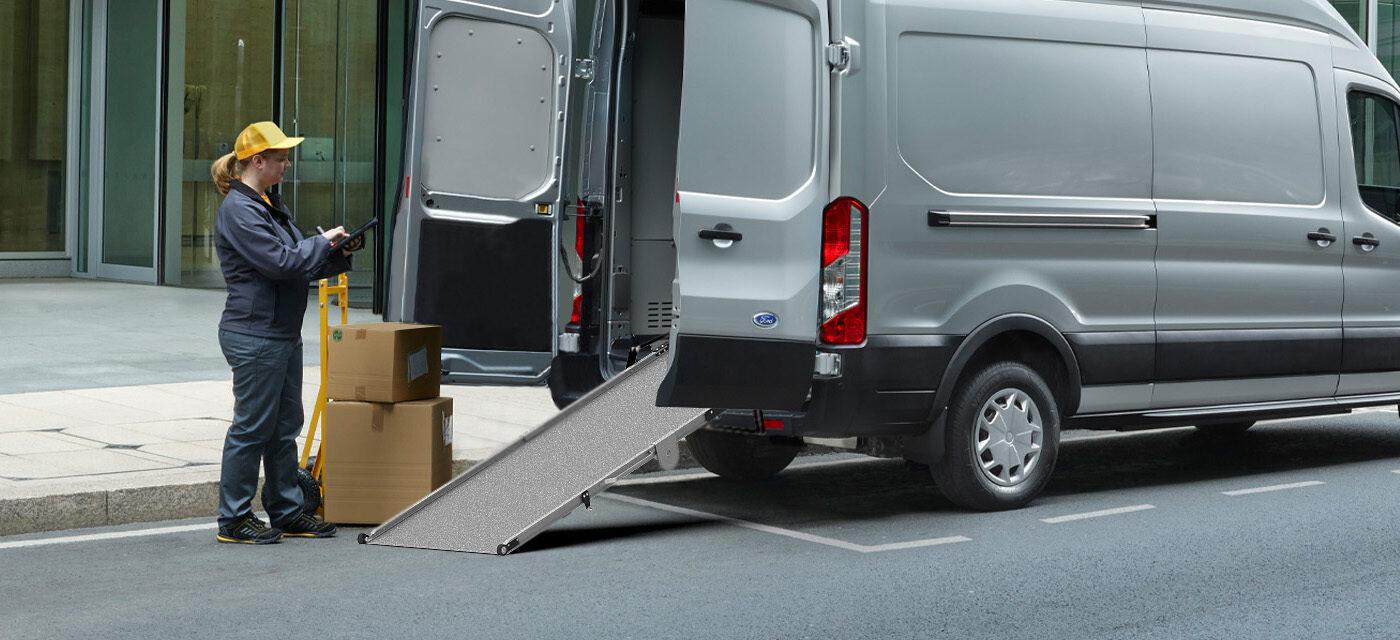
Selecting the Right Ramp for Your Vehicle
In the world of transporting cargo and equipment, loading and unloading is a crucial step in the process. Some items are light and small enough to be carried in and out of a vehicle’s cargo area without risk to the worker. However, the process of removing something heavy from a cargo van runs the risk of a worker injuring themselves. This is why it’s important to consider options to reduce the risk of injury that come with transporting heavy cargo and equipment. One such solution is the aluminum ramp.
How to Spec a Ramp

Link designs and manufactures a wide variety of ramps built to address numerous cargo weights, widths and lengths. When it comes to selecting the right ramp, there are many factors that need to be considered. You’ll want to address all the questions before you place your order, so you know the ramp will fit in your vehicle and accommodate the cargo or equipment you need to transport. You’ll first need to determine the type and placement of your ramp. Link offers four types of ramp: Swivel, rear stationary mount, side-door mount or portable.
1. Will the Ramp Fit?
Once you have determined the type of ramp you would like, refer to the fit guide to learn which ramps will fit in each vehicle. If your vehicle is not listed, then the first question is straightforward. To figure out if a ramp will fit in your vehicle, you must first measure the height of the rear door opening. This will determine what length of ramp will fit in your van when folded in half or thirds. Refer to our spec sheet to see each ramp’s folded height including the baseplate. The next item to measure is the height from the ground to the floor of the vehicle’s cargo area. If you’re moving a large and cumbersome item, you’ll want a ramp with a lower incline to make loading and unloading feasible. That being said, the longer a ramp is, the heavier it is. While it is possible for one person to deploy and stow all of our ramps, the weight of the ramp is a consideration for the typical operator of your vehicles.
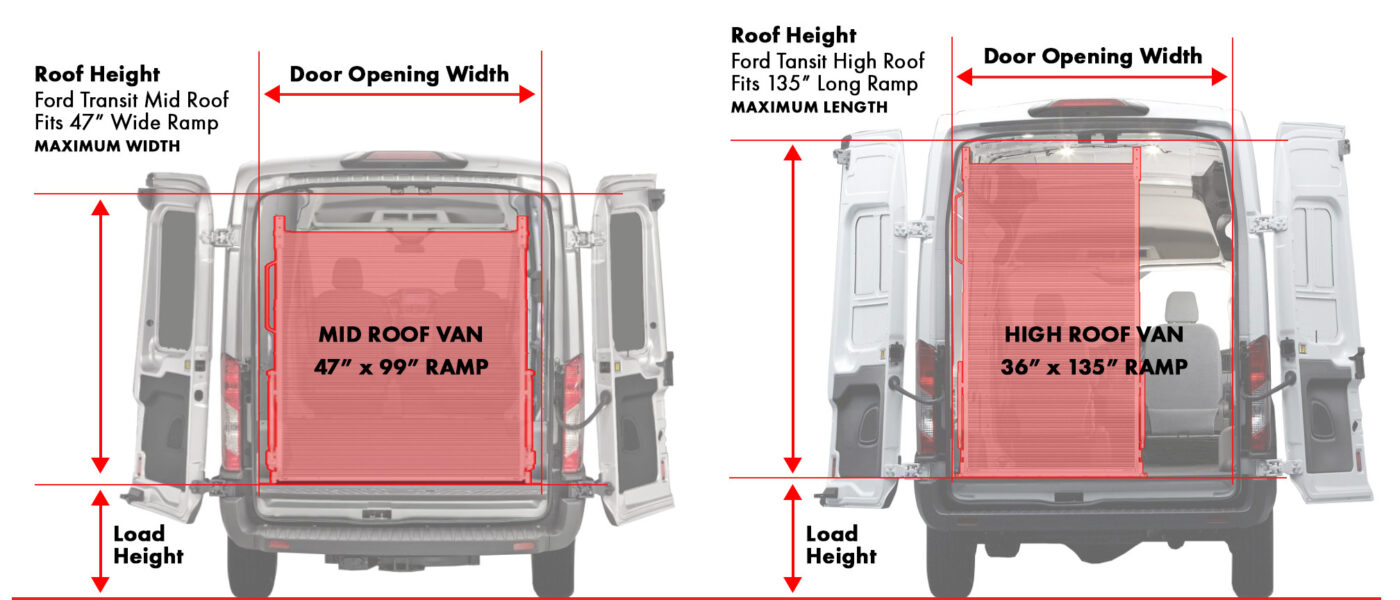
2. Which Width Does Your Cargo Need?
The next item to cover is the width of the ramp. Refer to the fit guide to determine which ramp will work best for your operation. If your vehicle is not listed, you must measure the width of the door opening. Once you have ensured that the ramp will fit within the vehicle’s door, you must next consider the typical width of the items you transport. Measure the width of your equipment and/or cargo and compare it to our available ramp width offerings. The listed width of the ramp is the usable width between the rails. This will help you narrow down your options to the specific ramps that will accommodate the items you transport.
3. What Incline is Best?
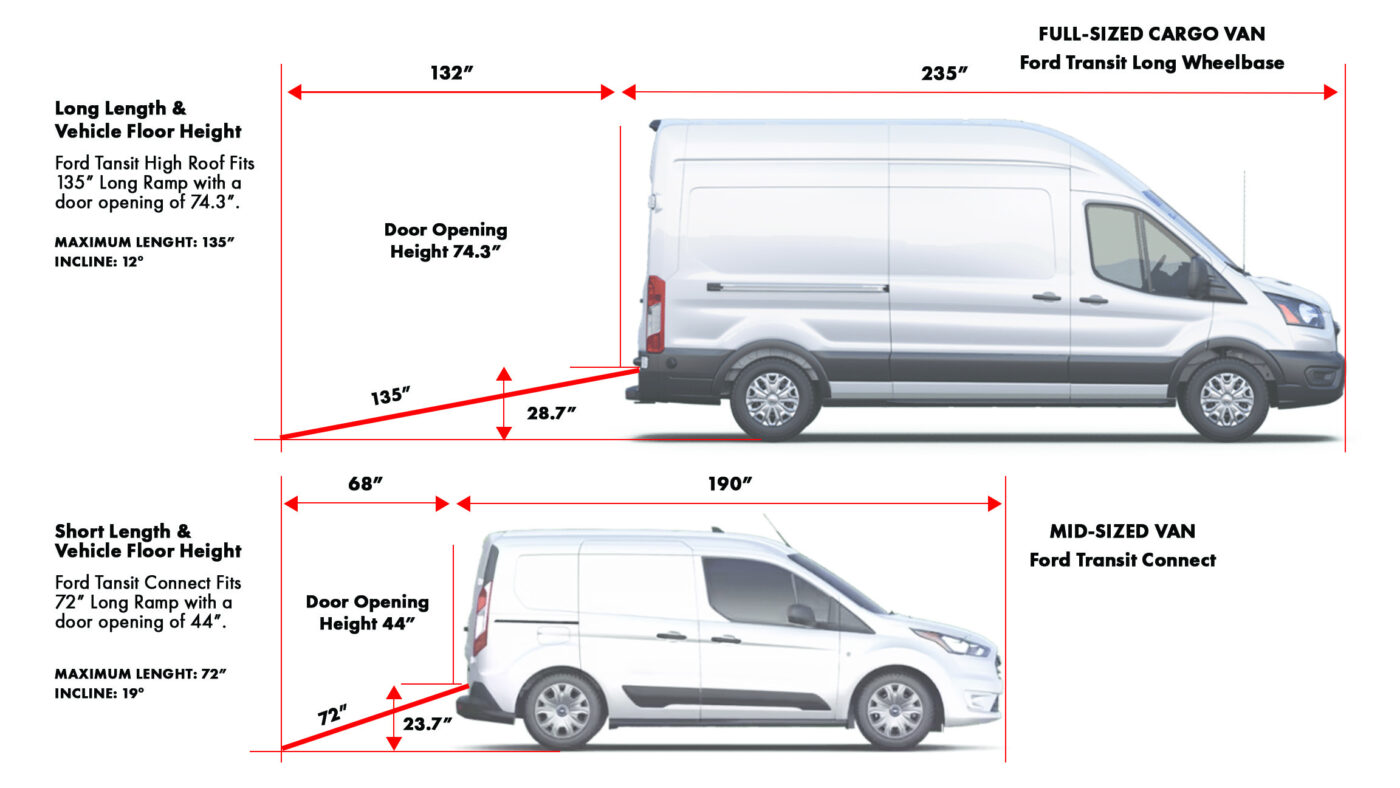
An important area to consider when choosing a ramp is the incline the ramp will take from the back of the vehicle to the ground. The steeper a ramp’s incline, the more effort it will take to move cargo and equipment in and out of the vehicle. The amount of effort one is required to output is directly determined by the load height and length of the ramp. Longer ramps have a shallower incline, which reduces the amount of effort a person would need to output to transport objects up and down the ramp. A steep incline might make it difficult to impossible to load heavier cargo. Therefore, it is important to consider the incline that will work best with your cargo and equipment. To quickly find the incline a Link ramp would have with the load height of your vehicle, along with the estimated effort required to load heavy items, refer to the table below. Another option to determine load angle is to take a tape measure, start from approximately 15” inside the rear door and run the tape measure out the door the length of the ramp that you are considering to the ground to visualize the angle.
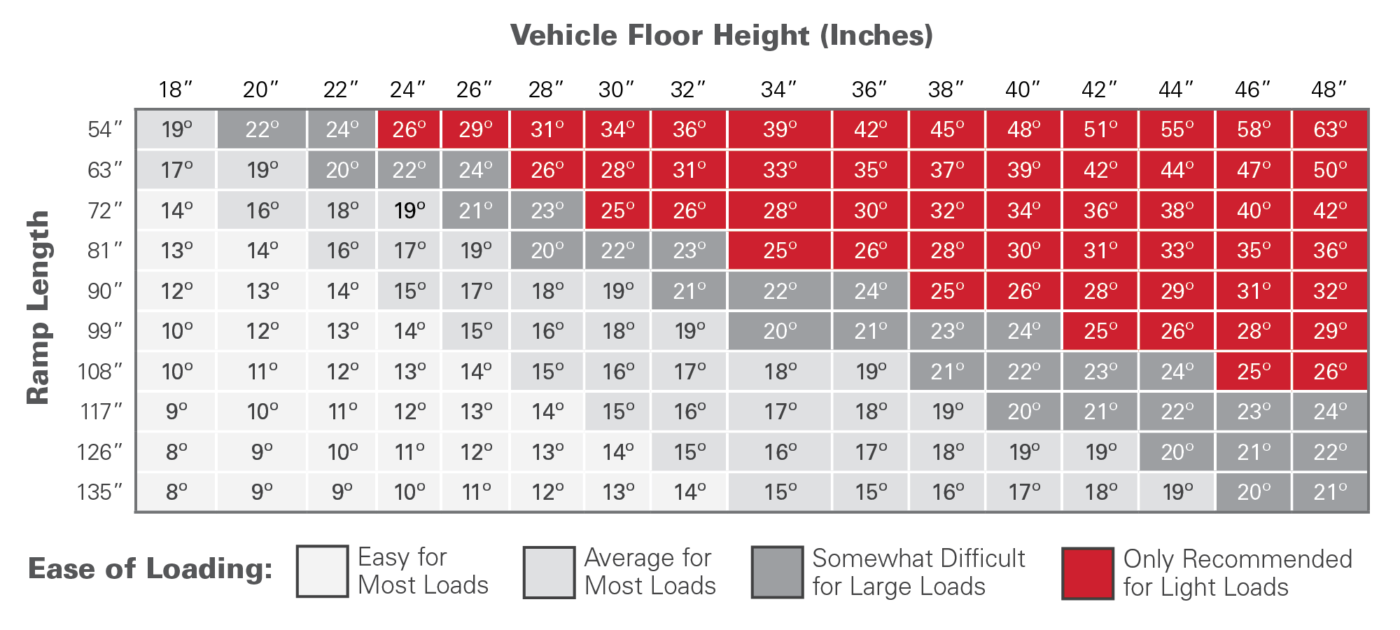
4. How Heavy Is It?
Another factor to consider is the weight of the equipment that you are transporting. A majority of Link ramps transport up to 1250 lbs, with some ranging up to a capacity of 1500 lbs. Heavier and larger cargo and equipment are best moved with a longer ramp. A longer ramp will have a lower degree of incline, which in turn requires less force and strain on the body to load and unload heavy items. If you are transporting smaller equipment and cargo with a hand truck, you can consider a shorter ramp, which is typically lighter and faster to deploy than the longer ramps. Transporting light objects at a greater incline runs a lower risk of injury when compared to transporting heavy items up a steep incline. Therefore, typically, the heavier the cargo and equipment, the longer ramp you will need.
5. Where is the Ramp Stowing?
The final item to consider when choosing a ramp is where the ramp will be mounted and stowed. Link offers 4 categories of ramps based on where you would like to stow the ramp during transit.
Side Door Stowing
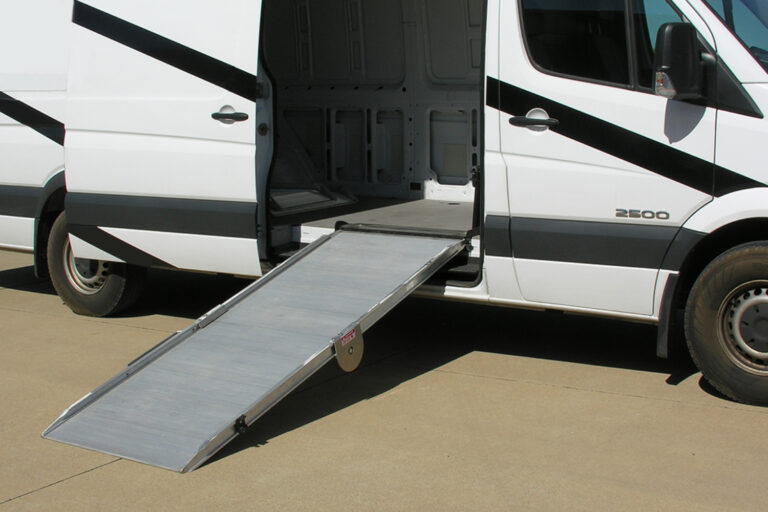
If you plan to mount and stow your ramps inside the side door of your vehicle, we offer the LB10 ramp series. The LB10 ramps are designed specifically for mounting on side-steps in cargo vans, allowing cargo to be transported in and out of the vehicle’s side door. You may use our LB20 ramps without spring assist in vehicles with side doors that do not have a step. Refer to the fit guide to determine which LB20 ramps are available for this purpose.
Rear Door Stowing

For mounting inside the rear door, we offer the LB20 bifold ramp series and the LT30 extended ramp series. The LB20 series mounts just inside the rear door and ranges from 72” up to 135” in length. Lengths 90” and greater can be purchased with a spring assist and wheel kit to aid in ramp deployment and stowage, making it that much easier to transition the ramp from the upright position to the ground and back into the stowed position. The LT30 extended ramp provides operators with a lower degree of entry while taking up less vertical space in the rear of the vehicle. The ramp is 119” long and stores at 46.5” high, making it a desirable choice for operators with vehicles that have a shorter rear opening and a need to transport heavy items.
Rear and Wheel Well Stowing
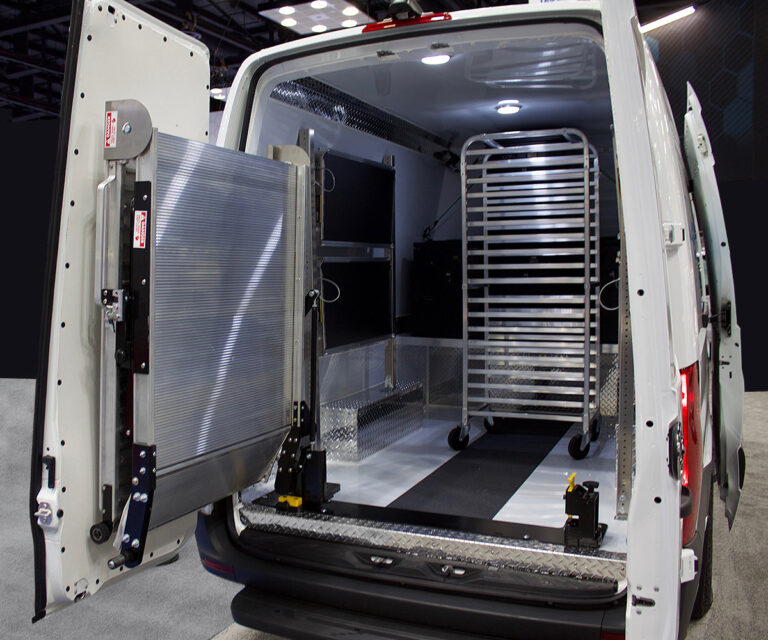
The final mounted ramp in Link’s lineup is the LSR90 Swivel ramp. This ramp series provides users with multiple stowing options, as well as an option to completely rotate the ramp out of the vehicle to open up the rear of the vehicle for unobstructed access. LSR90 can stow in a position behind the wheel well as well as directly inside the door. This allows users with versatile cargo and equipment many options to free up space when the ramp is not needed. All LSR90 ramps come equipped with a spring assist and wheel kit, making the ramp easy to deploy and stow.
Portable Ramps
For flexibility in stowage and deployment, Link offers two series of portable ramps available for both lightweight and heavy-duty applications. These ramps stow in any available space in your vehicle and deploy from any position in your vehicle’s rear or side door. The LWS40 Lightweight Series bifold or straight ramp is perfect for loading and transporting lighter products and machinery. For general use with cargo or equipment up to 1000 lbs., Link offers the LS50 Heavy-Duty Series bifold or straight ramp.
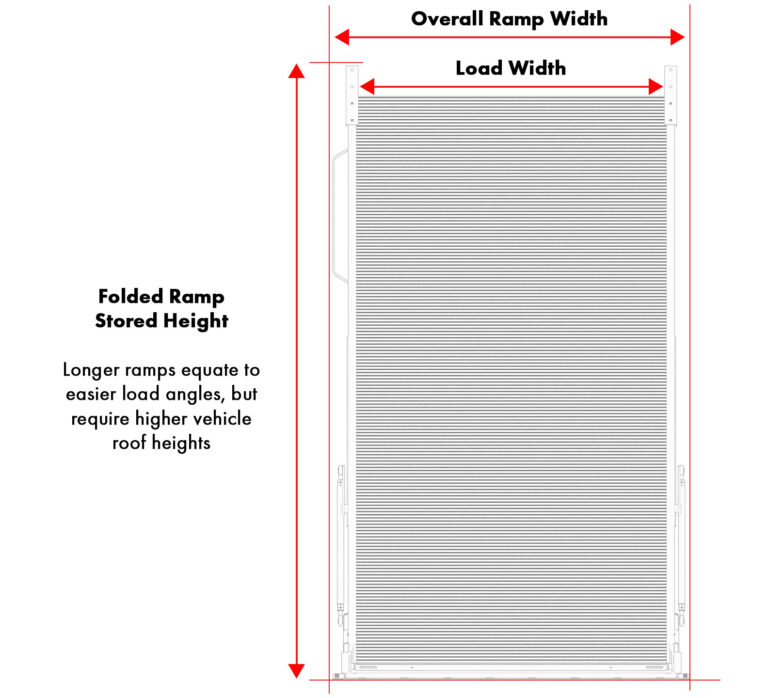
Which Ramp is Right for You?
Now that we’ve looked at all the things one should consider when deciding on a ramp to purchase, you may be wondering what ramp is best for your vehicle. Please first see the Link fit guide to determine the ramp that will best fit in your vehicle and serve your business. If your vehicle is not listed, please refer to the guidelines above. To determine the ramp name, width and length on the fit guide, refer to the description, which lists Ramp Series-Width-Length – Mounting Position (ex. LB20-24-72 – Rear Mount).
Why Link Ramps are Right for You
Link customers speak highly on the quality and longevity of the ramps. Our extensive range of mounted ramps provide users with safe, durable and economical solutions for cargo loading and handling needs. We are continuously working to improve cargo and equipment transportation, with the goal of making equipment loading and unloading easy while increasing the safety of industry workers. If you have any questions about Link’s Ramps, please let us know. Our team is happy to answer questions and direct you to a dealer near you.
Blog Author
Lynn Blake
Senior Account Manager


